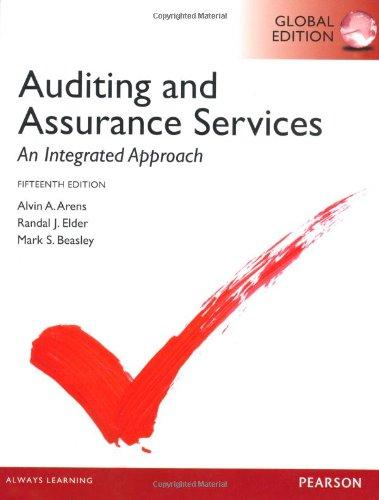Question
Lansing Electronics Inc. manufactures a variety of printers, scanners, and fax machines in its two divisions: the PSF Division and the Components Division. The Components
-
Lansing Electronics Inc. manufactures a variety of printers, scanners, and fax machines in its two divisions: the PSF Division and the Components Division. The Components Division produces electronic components that can be used by the PSF Division. All the components this division produces can be sold to outside customers. However, from the beginning, nearly all of its output has been used internally. The current policy requires that all internal transfers of components be transferred at full cost.
Recently, Cam DeVonn, the chief executive officer of Lansing Electronics, decided to investigate the transfer pricing policy. He was concerned that the current method of pricing internal transfers might force decisions by divisional managers that would be suboptimal for the firm. As part of his inquiry, he gathered some information concerning Component Y34, which is used by the PSF Division in its production of a basic scanner, Model SC67.
The PSF Division sells 40,000 units of Model SC67 each year at a unit price of $42. Given current market conditions, this is the maximum price that the division can charge for Model SC67. The cost of manufacturing the scanner follows:
Component Y34 $ 6.50 Direct materials 12.50 Direct labor 3.00 Variable overhead 1.00 Fixed overhead 15.00 Total unit cost $38.00 The scanner is produced efficiently, and no further reduction in manufacturing costs is possible.
The manager of the Components Division indicated that she could sell 40,000 units (the division's capacity for this part) of Component Y34 to outside buyers at $12 per unit. The PSF Division could also buy the part for $12 from external suppliers. She supplied the following details on the manufacturing cost of the component:
Direct materials $2.50 Direct labor 0.50 Variable overhead 1.00 Fixed overhead 2.50 Total unit cost $6.50 Required:
1. Compute the firmwide contribution margin associated with Component Y34 and Model SC67. Also, compute the contribution margin earned by each division.
Component Y34 $ Model SC67 $ Firmwide $ 2. Suppose that Cam DeVonn abolishes the current transfer pricing policy and gives divisions autonomy in setting transfer prices. Can you predict what transfer price the manager of the Components Division will set? What should be the minimum transfer price for this part? The maximum transfer price?
Transfer price $ Minimum transfer price $ Maximum transfer price $ 3. CONCEPTUAL CONNECTION Given the new transfer pricing policy, predict how this will affect the production decision of the PSF Division manager for Model SC67. How many units of Component Y34 will the manager of the PSF Division purchase, either internally or externally? Unless the PSF Division is able to
- decrease
- increase
- decrease
- increase
- $38 to $42
- $38 to $43.50
- $42 to $38
- $43.50 to $42
4. Given the new transfer price set by the Components Division and your answer to Requirement 3, how many units of Y34 will be sold externally?
- All 40,000
- None
- 20,000
5. CONCEPTUAL CONNECTION Given your answers to Requirements 3 and 4, compute the firmwide contribution margin. What has happened? Was Cams decision to grant additional decentralization good or bad? Firmwide contribution margin: $
The contribution margin
- decreases
- increases
- wrong
- right
Step by Step Solution
There are 3 Steps involved in it
Step: 1

Get Instant Access to Expert-Tailored Solutions
See step-by-step solutions with expert insights and AI powered tools for academic success
Step: 2

Step: 3

Ace Your Homework with AI
Get the answers you need in no time with our AI-driven, step-by-step assistance
Get Started


